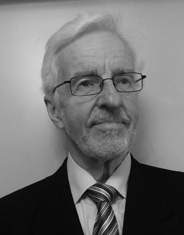
There is a lack of sound evidence on a number of common procedures in prosthodontics, and still dentists have been quite successful in treating totally or partially edentulous patients. Some methods are so well established that they deserve to be called dogmas. It is implied that a dogma is not supported by strong evidence even though it has existed and been practised for a long time. In the era of evidence-based dentistry it is appropriate to scrutinize such issues. The presentation will focus on some opinions about success and failure of prosthodontic treatment related to removable dentures, fixed prostheses, and oral implants.
Complete dentures
∙Complete dentures will continue to play a central role in the rehabilitation of edentulism
∙There is a poor correlation between prosthodontic and tissue quality and treatment outcome
∙More complex techniques do not give better clinical results
∙A face-bow is not necessary for jaw recording in prosthodontics
∙Variations in materials and techniques appear to have only minor influence on the clinical end
Result
∙There is no evidence that different clinical situations require different combinations of materials and techniques for impressions for complete dentures, neither that border molding and post dam are necessary
∙Complete dentures do not need balanced occlusion to function well
Tooth loss and partial edentulism
∙Tooth loss must not always be replaced
∙The Shortened Dental Arch Concept
∙Removable partial dentures or fixed dental prostheses?
Oral implants
∙Oral implants have revolutionized prosthodontics but they cannot solve all problems!
∙Incidence of technical complications are higher for implant- than for tooth-supported fixed restorations
∙Which is worse for dental implants: occlusal overload or smoking?
2. Dental occlusion in conventional and implant prosthodontics
Occlusion plays a central role in clinical dentistry. However, dental occlusion is a controversial issue and many questions related to the importance of occlusion cannot be answered with certainty if strong evidence is required.
The aim of the presentation is to discuss the controversial role of occlusion in conventional and implant prosthodontics. The lecture will focus on selected topics such as the following.
∙Some basic concepts related to dental occlusion
∙Which instruments are necessary when performing occlusal therapy?
∙Is there any difference between occlusion of restorations on natural teeth and occlusion of implant- supported prostheses?
∙What do we know about prosthodontic failures related to occlusal problems?
∙Occlusal vertical dimension (OVD)
∙The place of occlusal adjustment in oral rehabilitation
∙Implant restorations, bruxism, and temporomandibular disorders (TMD)
∙New knowledge of the neuroplasticity of the brain can help explain some controversies related to occlusion
3. Temporomandibular disorders – past and present opinions on management
Temporomandibular disorders (TMDs) have been considered one of the most controversial issues in clinical dentistry, and many controversies remain unresolved. TMDs encompass a group of musculoskeletal conditions, with overlapping signs and symptoms. The general dental practitioner can expect to find many patients who need treatment for TMDs due to its high prevalence in the population. Screening for TMDs should be performed on all dental patients.
Occlusal disturbances were for long believed to be the dominant cause of TMDs. Patients with TMDs were in many countries managed in prosthodontic clinics with various types of occlusal therapy. Research has however demonstrated that other than occlusal features are the dominant etiologic factors in TMDs. Even though an intraoral appliance provides an efficient treatment in the management of many TMD patients, they may not be necessary; proper explanation of the probable diagnosis and low-cost self-care treatment including jaw exercises should be the first option in management of TMD patients. The great majority of primary TMD patients will be helped by this treatment approach.
Most TMD patients can be managed successfully according to some simple principles using
conservative, reversible and evidence-based therapeutic modalities, which leaves occlusal therapy outside the currently accepted standard of care.
4. Implant Overdentures as the Standard of Care for Edentulous Patients
Implant overdentures have been suggested to be the standard of care for edentulous patients. This would certainly be desirable but in a global perspective it is not realistic, mainly because of economic reasons. However, a mandibular implant overdenture on two implants is a well-established and effective option.
∙Two anterior implants are sufficient
∙Ball attachments or a splinting bar can be used for denture anchorage
∙There is no greater risk for implant failure with an implant overdenture than with a fixed implant-supported prosthesis
∙Is it possible to use a single midline implant to retain a mandibular implant-supported overdenture?
-실시간 치과전문지 덴탈투데이-


